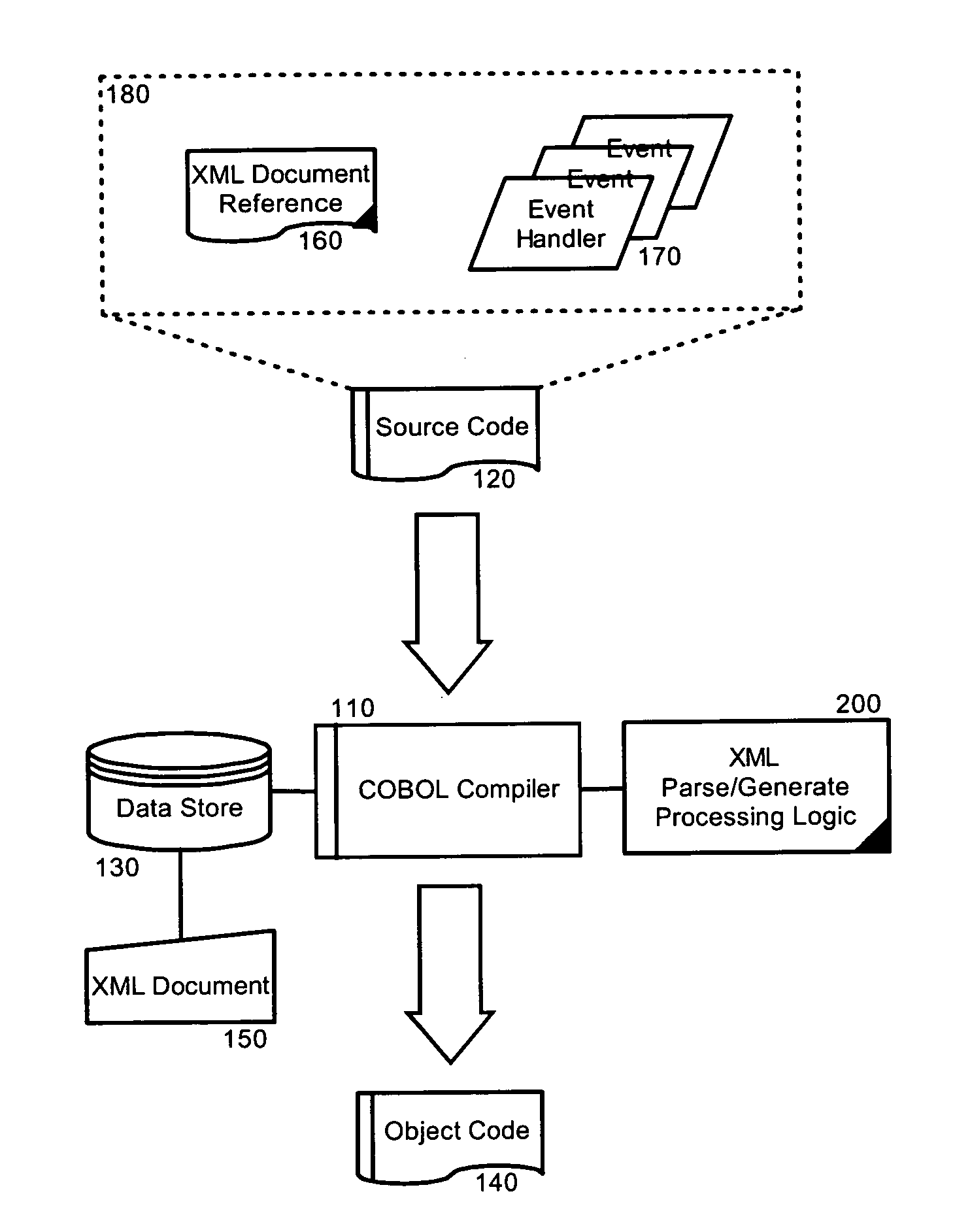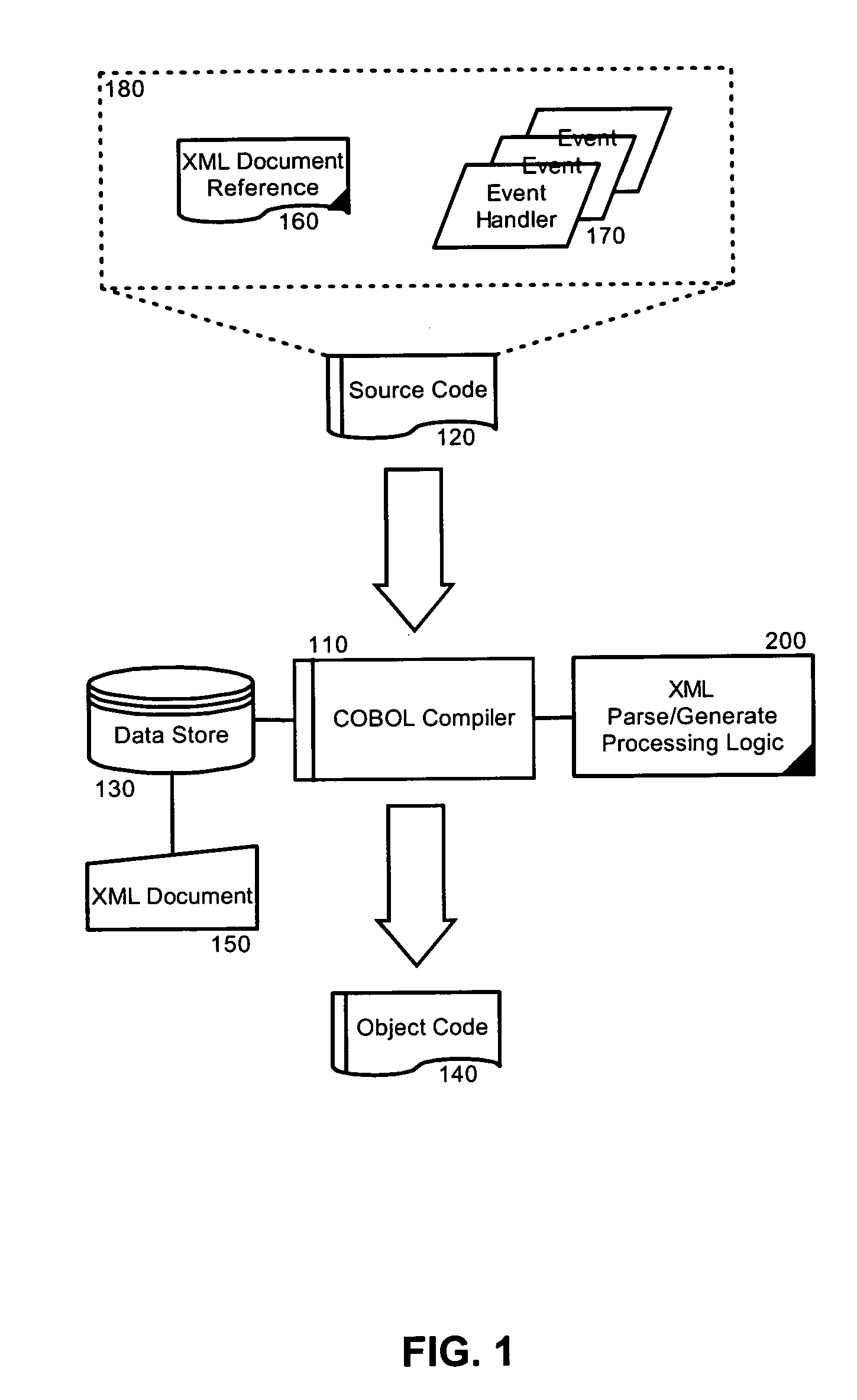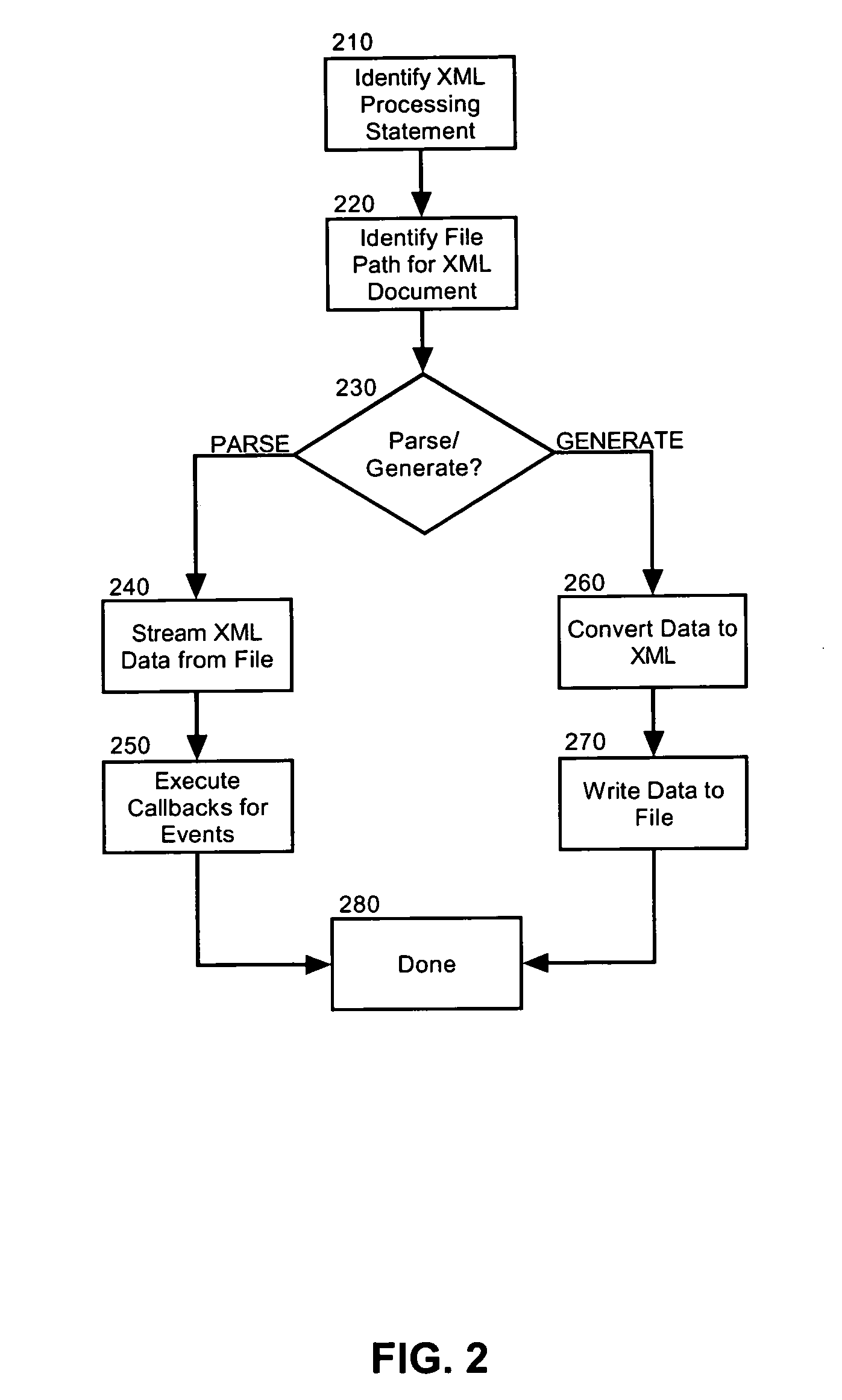COBOL syntax for native XML file parsing and file generation
a cobol syntax and xml file technology, applied in the field of xml file parsing and file generation within the cobol environment, can solve the problems of allowing the parsing of xml document streams, limiting the processing of xml documents, and limiting the size of xml document character streams
- Summary
- Abstract
- Description
- Claims
- Application Information
AI Technical Summary
Benefits of technology
Problems solved by technology
Method used
Image
Examples
Embodiment Construction
[0014] Embodiments of the present invention provide a method, system and computer program product for parsing and generating XML natively within the COBOL environment. In accordance with an embodiment of the present invention, a COBOL processing directive can be recognized in the course of compiling COBOL source code as one of an XML parsing and an XML generating statement. A file location for an XML document can be extracted from the directive. Subsequently, for an XML parsing instruction, XML data within an XML document at the file location can be parsed such that events within the XML data can be handled by specified COBOL procedures in the directive. Likewise, for an XML generating instruction, data accessed from within the COBOL environment can be converted to XML data and written to an XML document at the file location.
[0015] In further illustration, FIG. 1 is a schematic illustration of a COBOL programming environment configured to process a COBOL syntax to allow native XML ...
PUM
 Login to View More
Login to View More Abstract
Description
Claims
Application Information
 Login to View More
Login to View More - R&D
- Intellectual Property
- Life Sciences
- Materials
- Tech Scout
- Unparalleled Data Quality
- Higher Quality Content
- 60% Fewer Hallucinations
Browse by: Latest US Patents, China's latest patents, Technical Efficacy Thesaurus, Application Domain, Technology Topic, Popular Technical Reports.
© 2025 PatSnap. All rights reserved.Legal|Privacy policy|Modern Slavery Act Transparency Statement|Sitemap|About US| Contact US: help@patsnap.com



